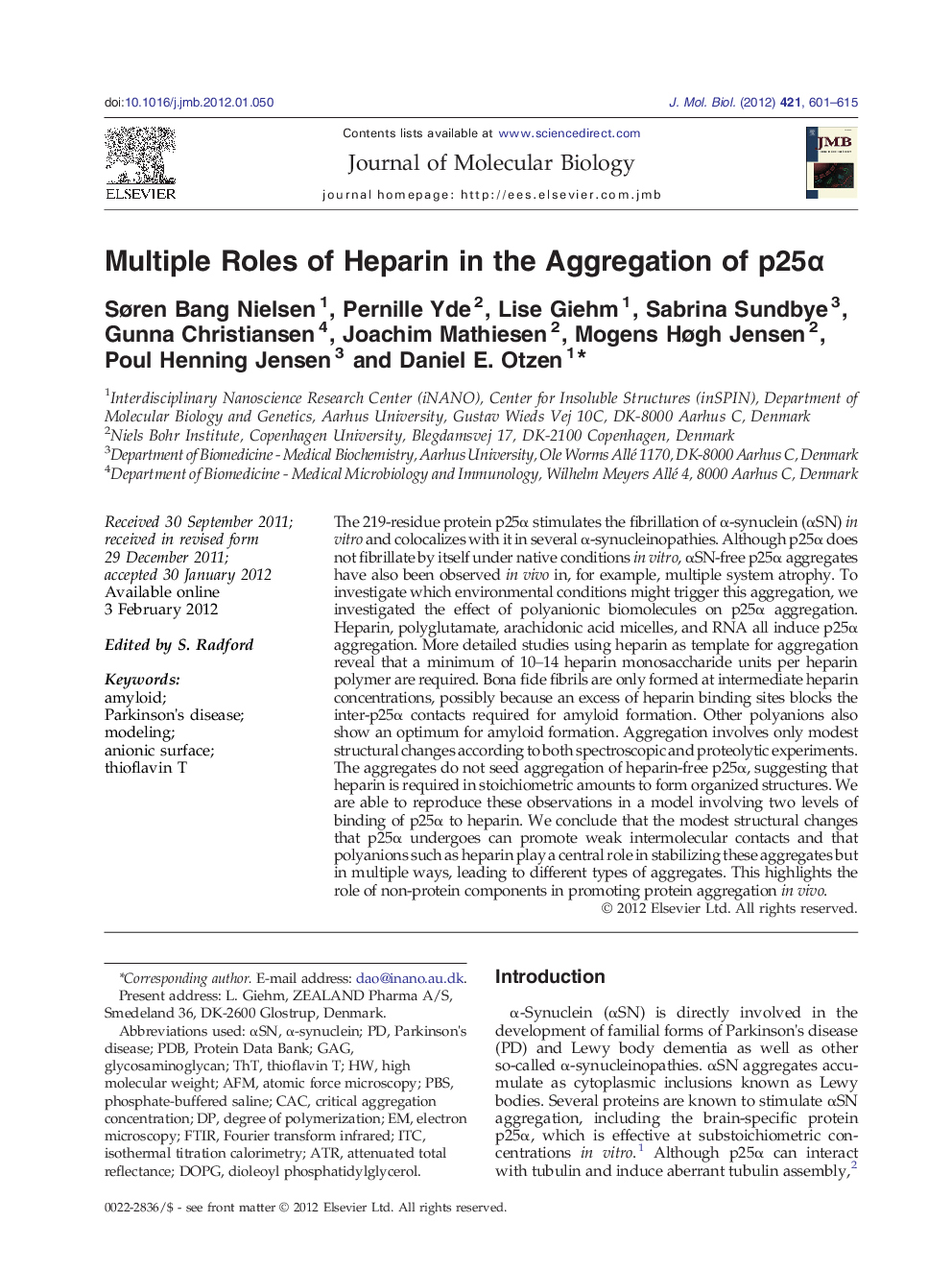| کد مقاله | کد نشریه | سال انتشار | مقاله انگلیسی | نسخه تمام متن |
|---|---|---|---|---|
| 2184924 | 1550359 | 2012 | 15 صفحه PDF | دانلود رایگان |

The 219-residue protein p25α stimulates the fibrillation of α-synuclein (αSN) in vitro and colocalizes with it in several α-synucleinopathies. Although p25α does not fibrillate by itself under native conditions in vitro, αSN-free p25α aggregates have also been observed in vivo in, for example, multiple system atrophy. To investigate which environmental conditions might trigger this aggregation, we investigated the effect of polyanionic biomolecules on p25α aggregation. Heparin, polyglutamate, arachidonic acid micelles, and RNA all induce p25α aggregation. More detailed studies using heparin as template for aggregation reveal that a minimum of 10–14 heparin monosaccharide units per heparin polymer are required. Bona fide fibrils are only formed at intermediate heparin concentrations, possibly because an excess of heparin binding sites blocks the inter-p25α contacts required for amyloid formation. Other polyanions also show an optimum for amyloid formation. Aggregation involves only modest structural changes according to both spectroscopic and proteolytic experiments. The aggregates do not seed aggregation of heparin-free p25α, suggesting that heparin is required in stoichiometric amounts to form organized structures. We are able to reproduce these observations in a model involving two levels of binding of p25α to heparin. We conclude that the modest structural changes that p25α undergoes can promote weak intermolecular contacts and that polyanions such as heparin play a central role in stabilizing these aggregates but in multiple ways, leading to different types of aggregates. This highlights the role of non-protein components in promoting protein aggregation in vivo.
Graphical AbstractFigure optionsDownload high-quality image (174 K)Download as PowerPoint slideResearch Highlights
► The protein p25α promotes αSN aggregation but does not aggregate by itself in vitro.
► We show that heparin and other polyanions significantly promote aggregation.
► An optimal concentration of heparin is found for amyloid formation; above this, amorphous aggregates form though amyloid may form transiently.
► A minimum of 10–14 saccharide units is required to promote aggregation, during which p25α only undergoes minor structural rearrangements.
► Our data can be modeled through two different types of p25α:heparin binding interactions, of which the first provides a template for regular alignment of p25α molecules.
Journal: Journal of Molecular Biology - Volume 421, Issues 4–5, 24 August 2012, Pages 601–615